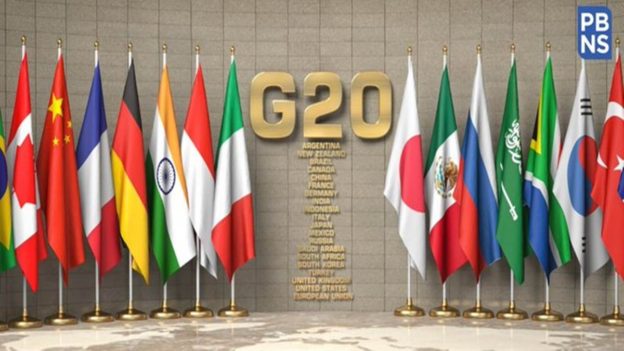India’s role in the Global South gains prominence as it seeks to balance geopolitical complexities while pursuing its developmental goals.
India’s current position in the global geopolitical landscape holds immense significance. The ongoing century is often touted as the “Asian Century,” within this narrative, India, alongside China and Russia, assumes a pivotal role. China’s economic might and initiatives like the One Belt, One Road project have raised concerns about its hegemonic intentions. At the same time, India’s refusal to participate and its independent stance have led to territorial tensions along the Line of Actual Control. Amid this backdrop, India’s role in the Global South gains prominence as it seeks to balance geopolitical complexities while pursuing its developmental goals.
Geopolitical Landscape
China’s endeavours in the One Belt, One Road initiative have been accompanied by strategic motives, leading to territorial disputes and concerns about sovereignty. India’s rejection of participation has resulted in border confrontations like the Galwan clash. However, both nations continue diplomatic efforts to resolve their boundary issues, with recent high-level meetings indicating potential progress.
India’s Engagement in the Global South
Beyond its border dispute with China, India focuses on contributing positively to the Global South. It has been active in international forums such as BRICS and G-20. India’s leadership in the Global South can drive social development initiatives, including:
South-South Cooperation: As a Global South leader, India can facilitate knowledge exchange, technical assistance, and capacity-building among developing nations.
Infrastructure Investment: Collaborating with platforms like BRICS, India can promote sustainable infrastructure projects to enhance economic growth and quality of life.
Healthcare and Pharmaceuticals: India’s pharmaceutical expertise can lead to affordable healthcare solutions through research, technology transfer, and disease management partnerships.
Renewable Energy: Sharing its renewable energy advancements can help address energy poverty and environmental concerns in developing nations.
Agricultural Innovation: Promoting sustainable farming techniques and knowledge exchange can improve livelihoods and reduce hunger.
Education and Skill Development: Education and skill enhancement initiatives can contribute to economic growth and poverty reduction.
Digital Connectivity: India’s tech sector can drive digital inclusion efforts to foster socio-economic development.
Disaster Management: Collaborative disaster preparedness strategies can mitigate the impact of natural disasters in vulnerable regions.
Cultural Diplomacy: India’s rich cultural heritage can facilitate cross-cultural understanding and international cooperation.
Advocacy and Policy Leadership: India can champion policies prioritising social development, poverty reduction, and sustainable growth.
India-China Dynamics
While India’s ascent on the global stage includes considerations of its relationship with China, it isn’t solely defined by countering China’s influence. Both countries share overlapping interests in trade, climate change, and global governance reform. India’s approach involves:
Strategic Competition: India engages in strategic competition with China to safeguard regional interests.
Balancing Act: India’s policy of strategic autonomy allows it to maintain relations with multiple powers without excessive dependence on anyone.
Diplomacy and Dialogue: Open communication and diplomatic engagement are crucial to prevent conflicts and promote understanding.
Infrastructure Initiatives: India’s involvement in connectivity projects can offer alternative options to regional countries, reducing dependence on a single actor.
Russia’s Collaborative Role
Russia can play a supportive role in India’s leadership among Global South nations, including in Africa:
Diplomatic Support: Russia can enhance India’s influence in international forums by strengthening diplomatic ties.
Multilateral Collaboration: Joint efforts within organizations like the UN, BRICS, and SCO can advocate for Global South interests.
Economic Cooperation: Economic partnerships aligned with India’s goals can foster development in infrastructure and energy.
Technology and Innovation: Collaboration can leverage Russia’s expertise and support development initiatives in the Global South.
Humanitarian Assistance: Collaborative efforts can provide aid during disasters and emergencies, showcasing solidarity.
Cultural and Educational Exchanges: Exchanging cultural and educational experiences can foster people-to-people connections.
Advocacy and Representation: Aligning foreign policy positions amplifies India’s voice as a Global South leader.
Peacekeeping and Security: Collaborative efforts can contribute to stability and security in conflict-prone regions.
Conclusion
India’s engagement in the Global South encompasses pursuing independent developmental goals while navigating a complex geopolitical landscape. Its relationship with China is defined by both cooperation and competition, driven by strategic, economic, and geopolitical considerations. Collaborating with Russia can enhance India’s influence and contribution to the Global South’s stability and development, drawing from historical ties and shared interests. As India strives for growth and leadership, its role in the global arena remains dynamic and multifaceted.
https://www.financialexpress.com/business/defence-indias-role-in-the-global-south-navigating-geopolitical-dynamics-3215821/





